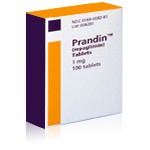Combination Therapy for Type 2 Diabetes: An Exhaustive Review


Type 2 diabetes mellitus (T2DM) is a chronic metabolic disorder characterized by insulin resistance, relative insulin deficiency, and impaired glucose metabolism. Given its progressive nature, monotherapy often fails to achieve long-term glycemic control, necessitating the use of combination therapy. Combination therapy refers to the use of two or more therapeutic agents to manage blood glucose levels effectively. This approach leverages different mechanisms of action to achieve better outcomes while minimizing adverse effects.
Understanding Combination Therapy for Type 2 Diabetes
Combination therapy for T2DM is based on the principle of using pharmacological agents that target different pathophysiological aspects of the disease. The rationale behind this approach is the recognition that diabetes is a multifactorial disorder requiring a multifaceted treatment strategy. Monotherapy with agents such as metformin or sulfonylureas may initially provide glycemic control, but as the disease progresses, the efficacy of a single drug often declines. To counteract this, combination therapy is introduced at various stages of diabetes management to achieve optimal glycemic control while reducing the risks of complications such as cardiovascular disease, neuropathy, and nephropathy.
Commonly Used Combination Drugs for Type 2 Diabetes
Pharmacological treatment of T2DM typically begins with metformin, which improves insulin sensitivity and reduces hepatic glucose production. However, when monotherapy fails, a second agent is added based on the patient's profile, risk factors, and tolerability. Several combination drug regimens are widely used in clinical practice:
- Metformin and Sulfonylureas – Sulfonylureas, such as glimepiride or gliclazide, stimulate insulin secretion from pancreatic beta cells. The combination with metformin, which works through a different mechanism, provides complementary effects and enhances glycemic control.
- Metformin and DPP-4 Inhibitors – Dipeptidyl peptidase-4 (DPP-4) inhibitors, such as sitagliptin and vildagliptin, prolong the activity of incretin hormones, leading to increased insulin secretion and decreased glucagon release. Their combination with metformin provides synergistic benefits.
- Metformin and SGLT2 Inhibitors – Sodium-glucose cotransporter-2 (SGLT2) inhibitors, like empagliflozin and dapagliflozin, promote glucose excretion via the kidneys, complementing metformin’s action.
- Metformin and GLP-1 Receptor Agonists – Glucagon-like peptide-1 (GLP-1) receptor agonists, such as liraglutide and dulaglutide, enhance insulin secretion, reduce appetite, and slow gastric emptying. These effects make them particularly beneficial in combination with metformin.
- Basal Insulin and Oral Antidiabetics – In cases where oral medications fail, basal insulin, often combined with metformin, provides enhanced glycemic control while minimizing the risk of hypoglycemia associated with prandial insulin regimens.
Complementary Therapies for Type 2 Diabetes
Beyond pharmacological treatments, several complementary therapies play an essential role in the comprehensive management of T2DM. These approaches include lifestyle interventions, dietary modifications, and alternative medical practices that support blood glucose control and overall health.
- Lifestyle Modifications – The cornerstone of diabetes management remains diet and exercise. Regular physical activity enhances insulin sensitivity and helps in weight management. A well-balanced diet rich in fiber, healthy fats, and lean proteins contributes to stable blood sugar levels.
- Herbal and Nutritional Supplements – Some studies suggest that supplements like cinnamon, berberine, and alpha-lipoic acid may have glucose-lowering effects. However, these should be used cautiously and under medical supervision.
- Mind-Body Interventions – Stress management techniques such as yoga, meditation, and acupuncture have been explored for their potential benefits in improving insulin sensitivity and reducing inflammation associated with diabetes.
Example of Combination Therapy in Practice
A practical example of combination therapy involves a patient with newly diagnosed T2DM who initially starts with metformin. Over time, if glycemic control remains inadequate, a second agent such as a DPP-4 inhibitor (e.g., sitagliptin) may be added. If further escalation is needed, an SGLT2 inhibitor or basal insulin might be introduced. This stepwise intensification ensures optimal glucose control while minimizing side effects and complications.
The Role of Prandin (Repaglinide) in Type 2 Diabetes Treatment
Prandin (repaglinide) is a meglitinide class drug that stimulates rapid, short-lived insulin secretion from pancreatic beta cells. Unlike sulfonylureas, which provide prolonged insulin secretion, repaglinide acts more transiently, making it particularly useful in controlling postprandial blood glucose levels. It is often used as monotherapy or in combination with metformin.
The key advantage of repaglinide is its flexibility in dosing, as it is taken before meals. This feature helps to address postprandial hyperglycemia while reducing the risk of hypoglycemia commonly associated with long-acting insulin secretagogues. Repaglinide is especially beneficial for patients with irregular meal patterns or those prone to postprandial glucose spikes.
Combination therapy involving repaglinide and metformin offers a dual mechanism: while metformin reduces hepatic glucose production, repaglinide enhances meal-related insulin secretion. This synergy allows for better glycemic control without significantly increasing the risk of weight gain or hypoglycemia. However, repaglinide should be used cautiously in patients with hepatic impairment, as its metabolism occurs primarily in the liver.
Conclusion
Combination therapy has become an essential component of type 2 diabetes management, providing a multifaceted approach to controlling blood glucose levels. The choice of drug combinations depends on individual patient factors, including disease progression, comorbidities, and tolerability. While metformin remains the first-line treatment, additional agents such as sulfonylureas, DPP-4 inhibitors, SGLT2 inhibitors, and GLP-1 receptor agonists are frequently added to enhance therapeutic efficacy.Prandin (repaglinide) serves as an effective option for addressing postprandial hyperglycemia, either as monotherapy or in combination with other antidiabetic agents. Complementary therapies, including lifestyle modifications and alternative approaches, further contribute to comprehensive diabetes management.Given the progressive nature of T2DM, ongoing monitoring and treatment adjustments are necessary to achieve and maintain optimal glycemic control. Future advancements in combination therapy will continue to improve outcomes, reduce complications, and enhance the quality of life for individuals with type 2 diabetes.
Medically Reviewed by Dr. Faride Ramos, MD
(Updated at Mar 29 / 2025)

